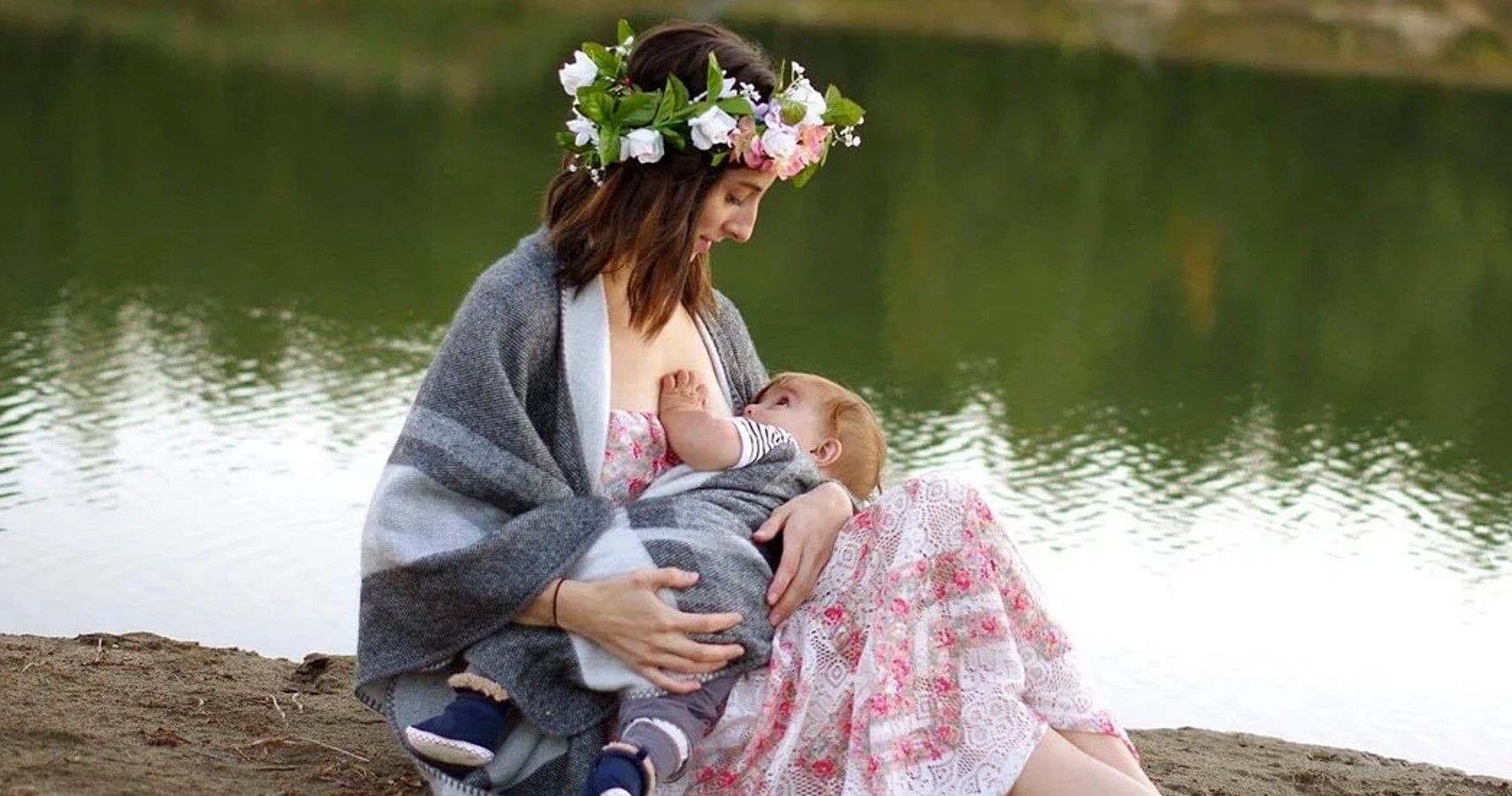If you’re breastfeeding, then chances are you’ve experienced a leaking nipple. This can be embarrassing if you’re on the go, and don’t have the option to change into something fresh right away. But that’s where breast pads come in.
Breast pads can be placed in a regular or nursing bra, and work to soak up excess moisture from leaking breasts. You may be surprised to know there are a variety of breast pads on the market, so figuring out which type best suits your needs is essential when beginning your breastfeeding journey.
Here’s what to keep in mind when shopping for breast pads.
What’s The Point Of Breast Pads?
Breast pads are commonly used to soak up the moisture from leaking nipples. Not only can this prevent an embarrassing and uncomfortable situation, but it also prevents infection.
As Very Well Health explains, if the breasts are excessively exposed to moisture, this can lead to skin irritation and painful nipples. It provides a perfect breeding ground for yeast and bacteria to flourish, which can result in infections like mastitis and thrush. Not only can such infections be uncomfortable and threatening to your health, but it also disrupts your ability to breastfeed.
Leaking breasts can happen for a variety of reasons and in many circumstances, like when you hear your baby cry or you’re becoming intimate with a partner. It’s especially common in the first few weeks of breastfeeding as the milk comes in, so this is when breast pads can be the most helpful.
What To Look For In A Breast Pad
When preparing to shop for a breast pad, there are a few things to keep in mind to ensure you’re buying a brand and type that works specifically for your needs. This includes:
Absorbency: the main use of breast pads is to absorb excess milk, so of course, you want to ensure the one you choose can do the job. Try to go for one that offers maximum absorbency – that way, you won’t have to change it as often (which means less laundry if you go the reusable route).
Comfort: breasts are extra sensitive while nursing, so ensuring your breast pad is comfy is of the utmost important. Mother Ease explains you don’t want the material to stick to your nipples when wet, which can cause discomfort. Instead, go for a pad with a stay-dry layer that will keep you feeling dry even when you’ve leaked.
Coverage: everyone’s breasts (and nipples) are different sizes and shapes, so it’s important to make sure the one you choose works for your figure. The larger your breasts are, the bigger the nursing pad likely needs to be. Also, consider the type of bra you often wear. If you wear something with less coverage, you may need a breast pad that’s smaller to ensure a comfortable fit.
Different Types Of Breast Pads
Before deciding what brand of breast pad is right for you, it’s important to consider all the different types available on the market. According to Very Well Health, the various styles include:
Disposable
With different sizes and thicknesses, it’s easy to find a disposable nursing pad that works well for you.
The benefit of this type is that you don’t have to worry about washing it after use – simply throw it out and grab a new one, which is great if you’re on-the-go or travelling. However, this also means it’s not a great option for people who want to be eco-conscious. In addition, having to constantly buy new disposable nursing pads can become expensive.
Reusable
There’s also a ton of variety if you choose to go the reusable route in terms of size, thickness, and material. The advantage of this type is that it’s usually more cost-effective since you only have to purchase one time. It’s also more eco-friendly.
The downsides, however, are that you need to wash them and find a convenient place to store them if you’re on-the-go until and need to change them out before you get home.
Silicone
While reusable, silicone nursing pads are distinct because they work to prevent leaks before they happen. They feature an adhesive that you stick directly to your nipple, thereby creating a layer to prevent breast milk from leaking out.
They can be easily cleaned with some soap and water, and can be worn with or without a bra, making them great for special outfits like backless dresses or swimsuits.
DIY
If you don’t anticipate needing to use breast pads for very long, consider making them yourself. You can make homemade pads with a variety of household items, like sanitary pads, wash clothes or old blankets. Simply cut the material to size and cover your nipple with it.
You’ll likely need to wear a bra with a DIY breast pad in order to keep it in place. You can consider using double-sided fashion tape to help secure it if it’s moving around too much.
Sources: Very Well Health, Danish Wool, Mother Ease,
About The Author

